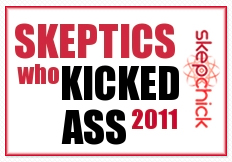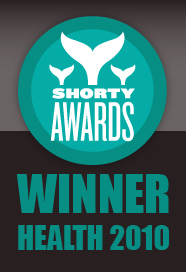Consider this scenario. You’re given a really complicated and challenging assignment to complete that will require a significant investment of time and money. But the chances that you will ever be asked to produce it are approximately 20%. Would you bother to complete it? Would you take the risk?
Such will be the conundrum facing suppliers wanting to sell complementary and alternative therapies (CAM) in Australia if new draft legislation from the Therapeutic Goods Administration (TGA – the equivalent of the FDA) is approved (more on this later).
This is one of several recent proposals which if introduced, could see significant crack-downs in alternative medicine in Australia.
With the recent budget came news of a possible thirty million dollar cut to private health fund rebates for complementary and alternative medicine (CAM). On the chopping block are homeopathy, aromatherapy, ear candling, crystal therapy, flower essences, iridology, kinesiology and naturopathy.
Now wait just a second, the government pays for ear candling and crystal therapy?! Well indirectly yes, if your private health fund covers it. Last year private health funds paid ninety million dollars to alternative medicine practitioners with the government kicking in thirty.
This recent announcement follows a leaked statement from the NHMRC on homeopathy which declared “(it is) unethical for health practitioners to treat patients using homeopathy, for the reason that homeopathy…has been shown not to be efficacious”. Well, no surprises there. After 200 years and more than 200 clinical trials, there is still no good data that homeopathy is any better than placebo (see “How does homeopathy work here). And considering that homeopathic principles predict it is just sugar or water we would expect no other outcome.
Perhaps the Australian Government forgot to take their warm and fuzzy pills, because now the TGA has got its cranky pants on about CAM on the Australian Register of Therapeutic Goods (ARTG). To understand the significance of this you need to understand the difference between Registered drugs and Listed drugs (bear with me, Dear Reader).
There are two arms to the ARTG, Listed products are considered low risk, are identified with an “AustL” number and include things like complementary medicines (e.g. herbal, mineral, vitamin and homoeopathic products), sunscreens and ear candles.
Registered products are high risk (because they have a known effect), are identified with an “AustR” number and include prescription drugs and painkillers.
Under the current system, you can get your CAM product stamped with an official looking AustL number by simply applying online. You should hold evidence that your product works – but you need not present it upon submission – and this is a critical factor. The story for AustR products is very different since they are considered high risk, simply translated to “they work”.
But now the TGA has drafted a new document that redefines what constitutes evidence for listed products and the CAM industry is crying the end is nigh! Under the proposed changes, applicants must now complete an expert report, consisting of a review of the scientific evidence going back at least ten years and sourced from Medline and at least one other database. According to the draft document; “.. an applicant….must provide an objective report that contains a comprehensive analysis of the data relating to the proposed listable indication…”
The TGA is also not shy about what type of studies they consider acceptable, “Studies with increased methodological rigor (are able) to produce evidence that more closely reflects the health benefits associated with a particular intervention.” And even further, the studies must provide evidence for your specific claim, such that if you are claiming weight loss, studies that describe body reshaping or improved muscle mass are not acceptable. So, “Indications must not, indirectly, or by implication, lead consumers to believe that the medicine will assist in a health benefit that is not explicitly supported by the balance of evidence.”
This is a gargantuan and time-consuming task and testament to this the TGA recommends applicants seek the assistance of a librarian.
But the real reason why some CAM sponsors have their knickers firmly in a knot probably lies with the TGAs definition of what constitutes an Expert. “An expert is defined as: a) a tertiary degree (of at least three years duration) in a health profession; and b) at least one of the following i) a course in critical appraisal or biostatistics from a tertiary institution (this could include a short course or a component of a masters); or ii) a PhD in a scientific or health related discipline; or iii) a specialist medical qualification.
So there’s the rub. Not only do you need to compile a thorough report detailing the evidence for your product, but you also need to convince someone with a lot of letters after their name to do it for you. (Mind you, I can name a homeopath and chiropractor whom fit the definition of an Expert and you’ll always find a doctor willing to support quackery, see Dr Joseph Mercola and Dr Oz).
By now you’re probably thinking what a great initiative from the TGA! Considering they’re known as a paper tiger for their lack of enforcement, this is a significant step forward! Until you realize there is one giant gaping hole in this proposal. The Expert report is not required to be submitted with the application for listing. Applicants must state they have it, but they only need to produce it if they are audited and the chances of that are about as great as the number of molecules that remain in a 12 ½ C dilution of homeopathy. Around 20%.
I recently submitted comment on behalf of Australian Skeptics Inc, regarding this obvious omission to what would otherwise be a significant improvement in the regulation of CAM in Australia and we await a response from the TGA.
Hold your breath folks or the paper tiger may blow away.
Browse Timeline
- « The wash-up from the AVN judgement – what does it mean?
- » Come out from behind that bench and KISS*.





